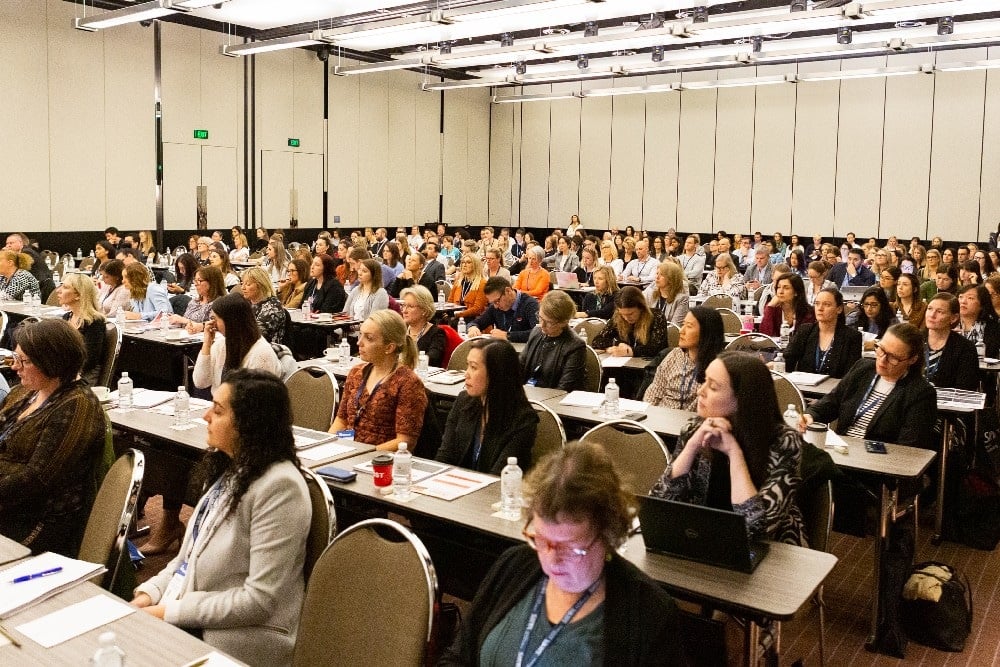
Recently, I chaired the two day Melbourne HRD HR Summit that included heads of people, culture and learning from a variety of well-known Australian and international...
With the rate of change and uncertainty in the world, CEOs think about trust regularly – no matter the size of their organisation.
According to PWC’s Australian 2017 CEO survey, sixty-three percent (63%) of CEOs were concerned about a lack of trust in business. Five years previously only 34% of Australian CEOs were concerned.
Now, in 2018, the trend has intensified. The unstable and fractured world we live in has placed new expectations on corporate leaders. In the 2018 Edelman Trust Barometer annual global survey, nearly 7 in 10 respondents said that building trust is the number one job for CEOs, ahead of high-quality products and services.
The reality is that CEOs must do work on restoring and maintaining trust. The issue? Well according to PWC’s 2016 global CEO survey, 55% of CEOs are not sure where to even start. And it’s unlikely this figure has changed much.
Over the past few years, I have spoken and worked with over 150 CEOs from midsize and large organisations about their frustrations with managing trust in the workplace.
Their domain of trust varies – for some, it is how their products are regarded in the marketplace. For others, it is whether their employees trust senior leaders with the CEO vision. But for nearly all of them, trust issues appear in how different teams work together and how leaders bridge that gap.
Yet, what most of them are unclear about is how trust is actually showing up in their organisation. Because trust is emotional and is processed in the part of the brain that is subconscious, it can be hard to detect or to fully understand the damage that can be done, if left unchecked. This makes it hard to fix because leaders don’t know where and how to fix it. Let’s take a look at the top five CEO trust challenges that get unpacked during our roundtables.
Many CEOs complain about their leaders who often confuse “being busy on busy stuff” as a sign of success and a hallmark of leadership. It shows up as leaders who are poor at delegating or who incorrectly demand accountability from their team as they constantly rush around fighting fire after fire. For many CEOs, this need to be busy indicates that leaders are not ready for growth and change.
This is really common in midsize organisations with limited resources. But it can also show up in large organisations. It’s a dangerous trap where leaders feel like they’re being productive, but all they’re really doing is avoiding the hard work of delegating, thinking about the future and making weekly progress on achieving it.
In 360 degree surveys, well-meaning leaders will often receive poor trust results from their direct reports and peers. Common complaints are that they don’t listen to employees in meetings or take action on their suggestions. Sometimes their busyness is seen as disorganisation that casts doubt on their leadership capability. Not only that, but the CEO starts to distrust them as they are too distracted and unfocused to spend important time thinking about the business and strategy.
It’s also an expensive problem. According to “Stop Spending, Start Managing” by Tania Menon and LeighThompson, executives estimate their organisation wastes $6,300 per day when employees show up but aren’t actually doing productive work. The lack of focus also creates a missed opportunity cost. While difficult to measure, CEOs worry about how much it is negatively impacting the organisation’s growth potential.
Of course, trust is very much tied to performance and capabilities. A high trust organisation switches on accountability, performance and people taking full ownership.
Usually, CEOs that are concerned about trust and performance are either relatively new to their role or vice versa. Typically, it’s at three different levels:
A fairly obvious concern for many CEOs, particularly when they had been recruited to turn around a company, were the types of conversations they observed. If CEOs noticed that people weren’t talking to each other in the staff kitchen or even in the customer service team, they knew something was deeply wrong.
After all, when you don’t get the unpleasant stuff out of the way, you waste a lot of time. It’s hard to get moving on anything if people won’t talk through issues or how to resolve them.
For some, it’s also about leaders in management teams falling into the trap of groupthink – not challenging each other (nor the CEO) and not sharing insights or feedback. CEOs often find it frustrating that they can’t have serious or deep performance discussions with their team.
But this issue is also observed in other department meetings when the leader speaks for everyone – while employees sit quietly, not contributing, relying on their manager to work out problems.
The tipping point is when people no longer care about the company to even speak up about issues, preferring to walk instead. As one CEO said, “It’s that eerie silence when people stop caring and then clients start leaving.”
It’s also expensive. According to a VitalSmarts study, the average manager estimates the cost of silence at $7,500. Silence damages employee engagement, relationships, deadlines, budgets, and culture.
CEOs know trust issues must be fixed when they realise that teams and leaders are not encouraging open and transparent conversations. This leads to the next point.
One of the problems we commonly deal with in organisations are leaders who have received poor 360-degree feedback and who had no idea that their peers or direct reports felt that way. Even though they had been blessed with a coaching development opportunity to improve their performance they were really despondent and hurt. Accumulating feedback over time is not only too late, but it’s overwhelming and unfair.
According to the SunSuper Employee Insights Survey, less than half of Australian workers find their performance review process useful (48%). However, it was considered slightly more useful if it was conducted every six months (57%). More than two-thirds of Australians (71%) don’t feel regularly rewarded or recognised for their performance.
While research from Right Management found that two-thirds of the factors that motivate performance at work are tied to career conversations and development opportunities.
Now, don’t get me wrong. Receiving 360-degree feedback is a fantastic opportunity for leaders to understand themselves more deeply. With coaching and the right support, it can take their leadership skills to a new level. The problem is annual performance evaluations are often too late and sends the wrong messages to everyone about performance improvement.
Rather than do standard six month or annual performance reviews, companies that train managers to deliver career conversations and development opportunities more effectively have 29% higher revenue, lower turnover and talent acquisition costs, and stronger customer loyalty. Yet, 68% of managers are not engaged in their team’s development.
CEOs often don’t recognise performance conversations as an issue, particularly when it comes to trust. But it’s a big one and it dramatically reduces their ability to create a culture of learning and innovation.
Of course, at the heart of trust issues in most companies are teams that won’t play together. As one CEO said at a roundtable, his teams want to help, but they don’t seem to be able to, in spite of themselves.
“But when you want them to think about the wider business they’re thinking about their team all the time. They’re wonderfully cooperative, but not engaged.”
When a successful group has been working together for some time, they quite easily form an in-group bias that makes it difficult to build trust and cooperate with different groups. Groups that feel threatened tend to close ranks and become more internally cohesive and exclude outsiders. It creates a vicious cycle of distrust and competitiveness between departments.
A study by London Business School and MIT’s Sloan School of Management found that a lack of trust internally slows down execution. They discovered that one of the biggest organisational challenges with collaboration was when a senior leader from another department asked for help. A department head would say ‘yes’ to the request (so as to appear that they were doing the right thing), but would fail to attend to it, mainly because they didn’t know how vital it was to the organisation as a whole, so other priorities for their business unit called their attention.
The result was senior managers trusted colleagues in other departments or business units to deliver at a pitiful 10% of the time.
A common theme with a lot of CEOs was that local leadership was trusted but not offshore. But for nearly all CEOs, getting teams to work together was a constant issue that created issues around meeting customer deadlines, fulfilling orders at the right standard or aligning to strategic objectives.
In today’s fast-paced business world, the more trust you have across your organisation, the faster you can operate. High trust organisations make the life of a CEO much easier. When trust is dysfunctional, it’s difficult to get things done well or in a fast manner. As the CEO, your life is much busier when you get sucked into fixing operational and people issues making it much harder for you to work on strategy.
What can be really frustrating for fast moving CEOs is that nothing changes or change happens too slowly; negatively impacting growth goals. For most CEOs they want people to be energised and excited to talk about new ideas. Having employees fully challenged and working at their peak abilities creates a fun environment that CEOs crave.
How do you fix it? There is no magic wand. Every organisation is different, but tinkering is insufficient. Just doing a restructure there or a bit of training here isn’t enough.
Instead, an integrative framework is needed to replace a collage of initiatives. This means senior leadership need to create the right architecture and support systems, using feedback from those on the frontline all the way to the top, to build a high trust environment.
In our experience, it all starts with the CEO and the executive team looking at their organisation through a new lens in order to rethink business processes, practices, communication, employee training and information systems. And it has to all be tied to a strong purpose and values that are practised and modelled by leaders every day. After all, trust is a journey, not a destination.
Of course, the sharpest knife can’t cut its own handle. Trust issues are hard to see from within. Organisations that open themselves up to an outsider perspective, who can more easily see the trust issues, get the most sustainable and fastest results.
If you think your organisation is ready to look at things from a new and fresh perspective, contact Marie-Claire Ross at support@trustologie.com.au or call 03 9696 8810 to find out how our proprietary internal roundtable approach helps CEOs breakthrough groupthink and the status quo.

Recently, I chaired the two day Melbourne HRD HR Summit that included heads of people, culture and learning from a variety of well-known Australian and international...

After 10 years of resisting Married at First Sight Australia, I have succumbed to the "social experiment." It's where Aussie singles tie the knot with partners selected...